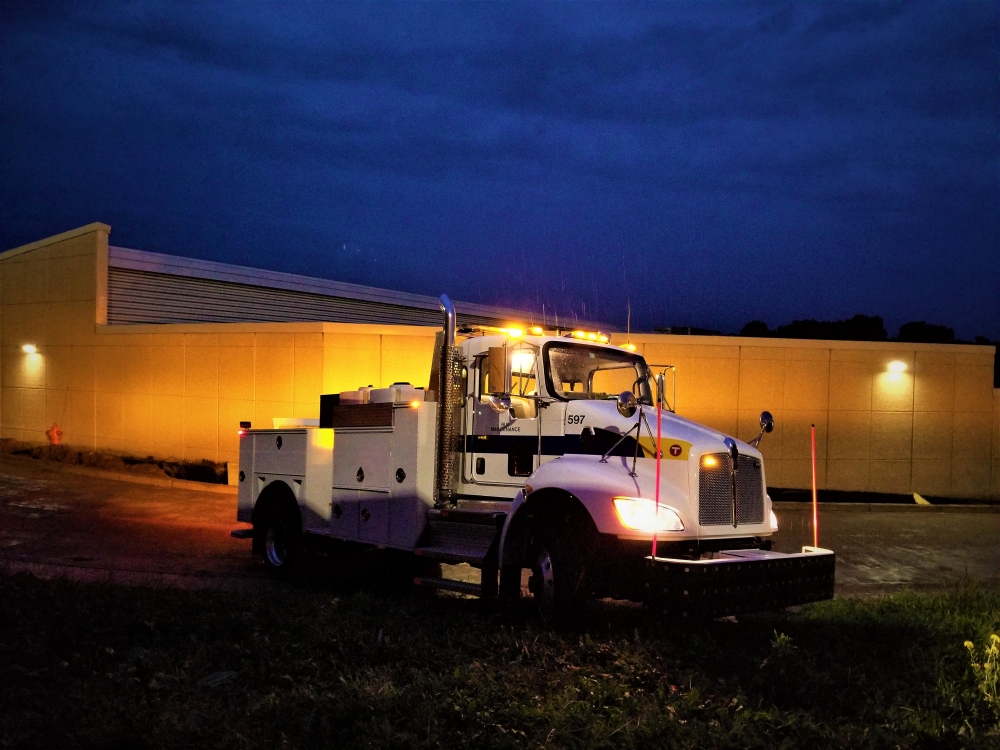
Metro Transit received four new service trucks earlier this year, including this truck at East Metro Garage. The vehicles become critical during the winter months, when technicians are sent out to recover buses that become trapped in the snow.
Anyone who lived through the Halloween Blizzard of 1991 knows that winters in Minnesota can come unexpectedly.
Metro Transit starts winterization earlier than one might expect: immediately following the end of the State Fair.
“Boy, oh boy, do we have our work cut out for us.” Paul Slesar, Heywood Service Garage Supervisor said. “We have a hard deadline in October to make sure that our buses are ready for winter.”
In a seven-county system with bus, rail, support vehicles, and stations and stops, the process of winterizing is slow and methodical, but requires a herculean effort on the part of Metro Transit employees.
At our five garages, our almost 1000 bus fleet begins the process of installing snow tires, adding 40-pound sandbags over the rear wheels, and testing the heating systems. The fuel is also gradually changed to a mix of diesel with a thicker viscosity to handle extreme cold.
“When the weather is at its worst, that’s when we get the most calls.” Ryan Shimon, East Metro Garage Supervisor said. “No matter how deep the snow, we get to our buses and get them unstuck.”
To support our bus fleet in the snow, around 280 Mechanic Technicians prepare for increased duty on road calls. Some will ride in one of four brand new service vehicles, which have needed an update as some are decades old.
"Due to our extreme cold we're often looking for new technologies to improve reliability and on-time performance,” Director of Bus Maintenance Matthew Dake said. “It can range from different types of lubrication to a new way to get unstuck from the snow.”
Currently, two buses are testing a system called Insta-Chain to see if this could help buses drive themselves out of snowy situations. The device drops and spins metal chains under the wheel after an operator pushes a button.
Rail also needs to prepare for extreme weather by testing heating, ice scraping and cutting operations, wipers, and sand delivery systems. Sand is applied to the tracks during slippery weather, which increases in the wintertime.
“We fill our sand tanks twice a week during the winter as opposed to once a week during the rest of the year,” Keith Meisinger Light Rail Vehicle Maintenance Supervisor said.
Facilities and non-revenue support our bus and rail services by ensuring that our police have snow tires and our snowblowers are functioning and can clear stations of snow. Fleet trucks are fitted with plows and brine or salt distributors installed to the rear of the vehicle.
Whatever winter weather that awaits us, Metro Transit is ready and hopeful for, as Public Facilities Supervisor Murray Olson said, “light, fluffy white snow. We can move that easy.”